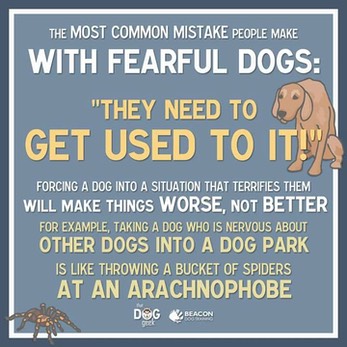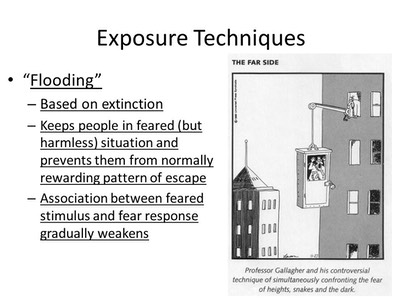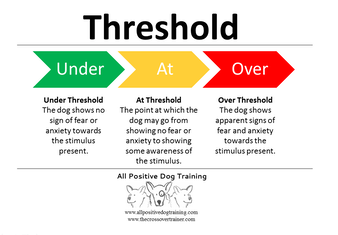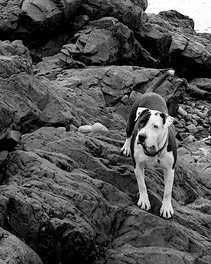
Like people, dogs can develop fears. Loud noises like fireworks, encounters with people, even interactions with other dogs can trigger fearful reactions. As with humans, the reactions can be varied. A noisy motorcycle can make a dog jump. A strange person approaching can lead to a bite. Exposure to other dogs can lead to a dog shutting down. Fear can lead to undesired and at times, surprising behaviour.
Fear is the most common cause of aggression in dogs (Stilwell, 2016). Forget about dominance. Ignore your dog trying to be an alpha. Most often when a dog is aggressive, it is a fear based response. Why is that? A dog that is confident is a dog that feels safe. A dog that feels safe is a dog that is safe to be around.
Fear responses are normal. I do not know any human out there which can claim they have never been frightened. The same is true for our dogs. Why than should the rules be any different for them?
Too often I hear of people discussing a situation where their dog growled, lunged, or made a snap at another family member. The story is often followed by, “so I am rehoming my dog…I have to put my family first”.
I challenge this statement on a number of levels (for more on that read Rehoming Your Dog…A Challenge) Before people get aggravated with me, I am not saying that you choose your dog over your child. I am challenging the idea that is has to be an either/or choice in most cases. You helped create the problem, now help fix it.
Introducing Flooding
One of the means people often use to address fear is flooding. (Yin, 2005)
If you have ever watched Cesar Millan working with dogs, you will see flooding used frequently. In many cases, it appears the dog is making progress in minutes as the dog’s behaviour seems to change. Sadly people often mistake the dog’s compliance with the problem being fixed. This is rarely the case. Often the dog is simply exhibiting a learned helplessness as opposed to any actual progress.
Flooding, in it’s simplest form, is when a stimulus is presented full force until the dog stops reacting to it. Using the analogy in the above picture…your dog is fearful of other dogs so you bring your dog to the dog park. The dog is kept in the dog park until he is no longer reacting negatively to the other dogs.

Even more unfortunate is when flooding is used in combination with more adverse consequences. Using the same analogy…your dog is fearful of other dogs, you bring your dog to the dog park, your dog reacts by hiding behind you, you push your dog out into the other dogs. Your dog growls at the other dogs, you punish your dog. Your dog stops growling. By all appearances it seems like your dog is progressing. However, it is more likely the dog is still feeling much apprehension from being in the company of other dogs, will still lash out or will no longer lash out but has lost complete trust in his owner. In either case, it tragic for the dog and owner. Flooding is a very slippery slope. Used in combination with positive punishment practices, it can be a recipe for disaster. (For more read, Why Punishment Does Not Work)
Flooding can work. It is much more likely however to offer a false sense of security to the dog’s owner. Flooding has the potential to destroy a dog’s trust in it’s owner, may cause more serious problems to emerge and can cause long lasting mental health issues for your canine companion.

Desensitization as an alternative and safer approach
A much more effective technique to use is a program involving gradual desensitization.
Desensitization involves a stimulus being presented at a level low enough that the dog elicits a neutral or even a positive response to it. Gradually the strength of the stimulus is increased, until the animal learns to ignore the full-force stimulus. A key to proper desensitization is to find out where your dog’s threshold is and work your dog under threshold. Work short periods of time in easily managed blocks building slowly on success.

In proper densensitization, the owner attempts to control and manipulate as many of the parameters as he can. Factors like distance, duration of exposure, and intensity of the stimulus all factor into developing proper desensitization practice exercises to bring about desired responses. Used in conjuction with classical conditioning, desensitization can lead to some very positive long lasting outcomes.
Desensitization does have some weaknesses. Desensitization often takes time. It requires active evaluation from the owner. It requires patience and understanding your training practices need some fluidity. Desensitization can be frustrating and present the owner with setbacks. Humans tend to be impatient. We want results and we want the results yesterday. Proper desensitization cannot and should not be rushed. Desensitization however, does not have the same downfails inherent in flooding. It presents a much more enjoyable and safe learning environment for both dog and owner.
Proper desensitization practices destinguish quality trainers. It is an invaluable cornerstone in any top notch training program.

Many of you are familiar with Rigger’s story. Rigger was my rescued pit bull. She had a troubled past with very concerning behaviour but turned into an amazing dog. (to read her story refer to Rigger’s Story).
Rigger taught me so much about the intricacies of proper desensitization practices. She was living proof that, when done correctly, desensitization and counter conditioning practices are invaluable and necessary tools in any training arsenal. In 2014 I dropped into a daycare with Rigger and captured her interaction with other dogs on video. Have a look at her playing with the other dogs.